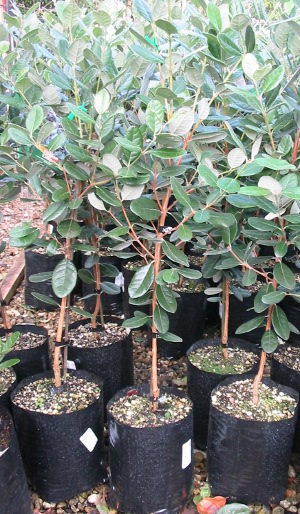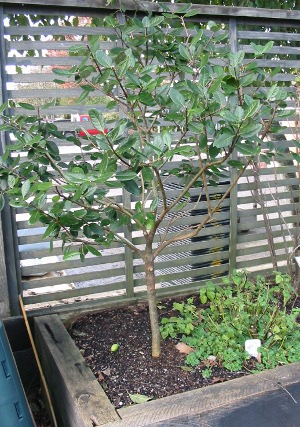|
Feijoas in Flavour |
||
|
Feijoas are the easiest of all fruit trees to grow and they produce masses of juicy delicous fruit every year!
|
||
|
Getting Started The versatile feijoa is well suited to our environmental conditions and can be grown as an attractive and productive hedge. In summer this evergreen tree bears pretty red flowers. When it comes to choosing the best feijoa tree for your garden, there are two outstanding varieties which we recommend. Most feijoa varieties require a pollinator in order to fruit, Feijoa 'Unique' is the only self-fertile feijoa.
Big Jims feijoa tree recommendations:
Where to plant Feijoas can be planted anywhere in the garden and can withstand wind, coastal conditions and frost.
How to plant Plant your feijoas in a sunny position. Add a large handful of sheep pellets to the hole as you plant your tree. Only plant the tree as deep as it is in the bag. Water in well. Feijoas can also be planted in pots (though it must be a decent sized pot). The pot should have a volume of 20L or more. Use a good quality tub mix and make sure that there is bark or stones at the base for drainage. The pot will also need to have drainage holes.
Pruning Feijoa trees do not require a lot of pruning. Every second year the tree can be thinned or kept to the height you desire. This is best done once fruiting is complete in early winter.
Feeding Apply Tui Citrus and Fruit Tree fertiliser once a year in Spring by sprinkling around the drip line of the tree and watering in. For feijoas growing in pots use Yates Acticote for pots which will provide a controlled release of fertilizer.
Plant Protection Feijoas are incredibly unlikely to have any issues with pests and diseases. In a rare case the tree may get scale. They are small and brown in size and can usually attract a black sooty mould. If this occurs spray with Conqueror Oil.
Harvesting The fruit is ripe and ready to eat when they fall to the ground. The one exception is Den’s Choice, touch the fruit and the ripe ones will fall to the ground. |
     |
|
RecipesFeijoa trees crop so well that you will be inundated with these green beauties so try creating relish, jams and chutneys. Below are a couple of recipes created by Brian, and are absolutely delicious especially with cheese and crackers.
Feijoa Chutney Aromatic fruits such as feijoas make excellent chutneys. 1 kg feijoas 500 g onions 300 g raisins 500 g pitted dates 500 g brown sugar 1 Tbsp ground ginger 1 Tbsp curry powder 1 tsp ground cloves ¼ tsp cayenne pepper 4 tsp salt 4 cups malt vinegar Wipe the feijoas, trim the ends and finely slice them by hand. Finely chop the onions and coarsely chop the raisins and dates. Combine all ingredients in a large saucepan, bring to the boil and cook very gently for 1 ½ - 2 hours, until the chutney is thick. Make sure the chutney doesn’t catch on the bottom of the saucepan. Pour into hot, clean jars and seal Makes about 3 Litres
Feijoa and Fig jam 1Kg feijoas—flesh scooped out 400g dried figs Sugar Put fruit into pan/pot with enough water to cover the bottom. Boil for about 10 minutes, stirring often Measure fruit pulp into cups again adding cup for cup of sugar, keeping fruit boiling. Boil briskly—testing for settling after 10 minutes, stirring often. Pour into hot sterilized jars and seal. Makes 6 - 7 jars |
||
